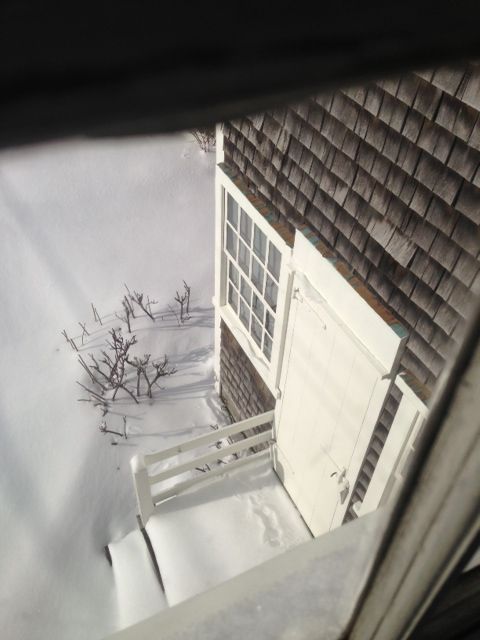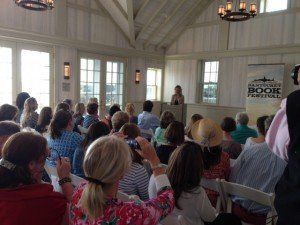Mitchell House is Open!
We have had a busy opening first two weeks here at Mitchell House. After a week of training, the Mitchell House’s new summer intern, Sarah Scott − a 2012 graduate of Vassar College − is leading tours of the House, working on planning our summer Junior Historian classes for children aged 7-10, and learning the finer points of “keeping” a historic house museum. Soon, she will be assisting me with cleaning and moving the Special Collection books and working on some small research projects related to the Mitchells. We had a large number of visitors during our first week and on Saturday, I led a women’s walking tour concerning Maria Mitchell and other famous Nantucket women.
Additionally, as co-sponsors of author Amy Brill with the Nantucket Book Festival (NBF), MMA was a part of some of the activities for the NBF including the opening reception and talk, as well as the opening dinner and of course the breakfast at the Dreamland Theater where Amy read from and spoke about her debut novel The Movement of Stars inspired by the life of Maria Mitchell. Amy also spent some time at MMA speaking more about her book and meeting some of our members as we opened up the Mitchell House and the Vestal Street Observatory for invited guests.
Amy continues on her travels promoting her book – an exhausting thing to do especially when she leaves her husband and two young daughters behind for much of it – although they were able to come along to Nantucket for the weekend! But leaving them at home likely has given Amy a better understanding of what Quaker women went through when they left their young families behind to spread the word of the Quaker faith throughout America and even sometimes abroad for many months or even years at a time.
If you have not had a chance to read Amy’s novel, please do. Amy is sure to have more novels for us to read in the future. Thank you, Amy, for your time and for being so inspired by Maria Mitchell and this tiny little island that had such a far reaching influence many generations ago.
For further inspiration, please come by Mitchell House for a tour or sign a child or yourself up for one of our history/historic preservation classes! Become inspired by Maria Mitchell and the Mitchell family as Amy did. You never know what that inspiration may become!
JNLF
Recent Posts





